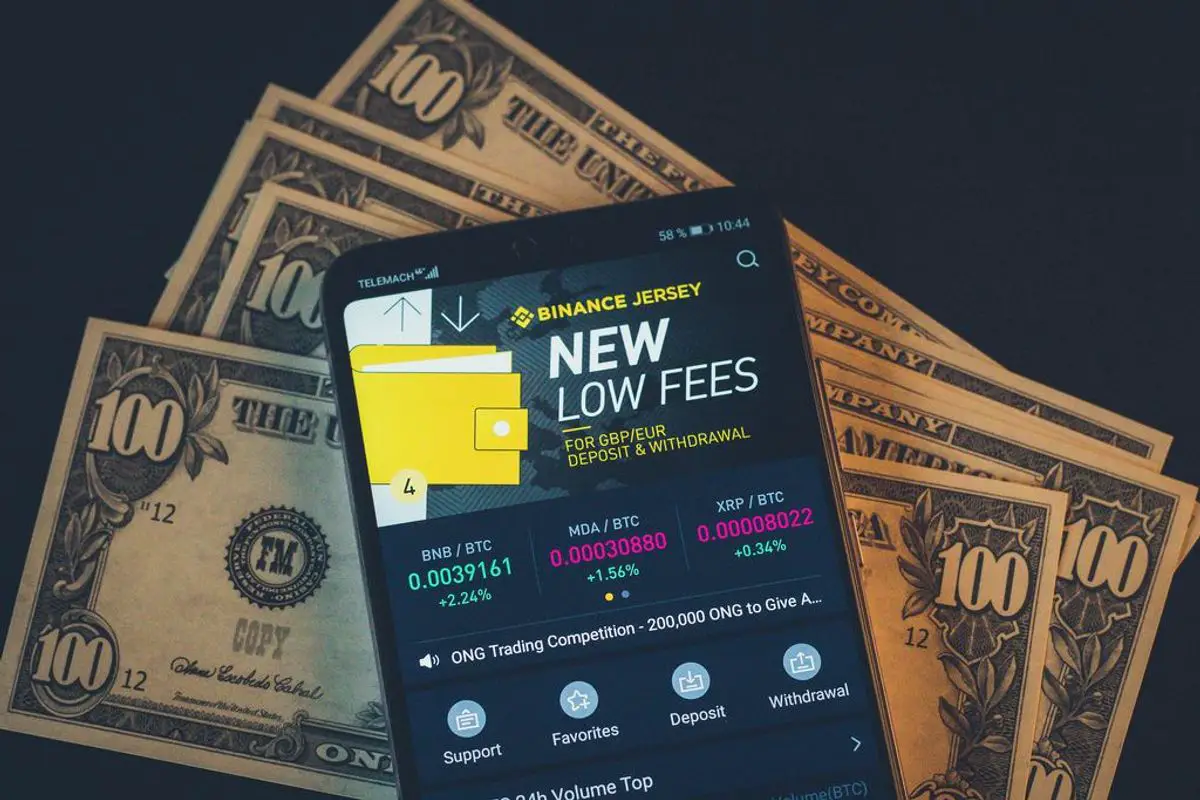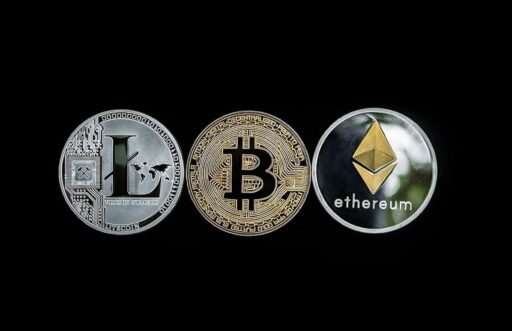As the cryptoverse continues to expand, traders are on a perpetual quest to find platforms that offer the lowest trading fees, enhancing their potential for profitability. This article delves into the intricacies of crypto trading fees, spotlights platforms with competitive rates, and outlines strategies to minimize expenses. It also explores the evolution of fee structures and provides insights on how to enhance the overall trading experience.
Key Takeaways
- Binance stands out with the lowest transaction fee rate among major trading platforms, charging only 0.1%.
- Blur NFT Marketplace revolutionizes trading for creators with a low royalty fee of 0.5%, prompting other marketplaces to adjust their fees.
- Investiva offers tailored low-risk trading strategies, catering to the dynamic Web3 environment.
- Trading platforms are increasingly integrating advanced order protections and offering educational resources to improve the trading experience.
- Decentralized exchanges (DEXs) and fee discounts are effective strategies for traders to reduce costs and maximize returns.
Understanding Crypto Trading Fees

Comparing Major Exchange Fee Structures
Cryptocurrency exchanges are the gateways to digital asset trading, and their fee structures can significantly affect your trading profitability. Understanding fee structures is crucial for trading profitability, as they can vary widely among platforms. For instance, Binance is known for having the lowest transaction fee rate amongst all major trading platforms, charging only 0.1% per trade. In contrast, Coinbase and Kraken charge 1.99% and 0.26%, respectively.
| Exchange | Fee Rate |
|---|---|
| Binance | 0.1% |
| Coinbase | 1.99% |
| Kraken | 0.26% |
Exchanges play a vital role in the digital currency landscape, and as the market evolves, so must the user experience (UX) for all users. The competitive nature of the cryptoverse has led to a dynamic environment where exchanges are constantly adjusting their fees to attract and retain users.
The NFT marketplace has also seen significant changes in fee structures. Blur, for example, has set a new standard with a low royalty fee of 0.5%, challenging OpenSea’s previous dominance with a 2.5% fee. This move not only benefits traders but also reshapes the revenue models for platforms and creators alike.
The Impact of Trading Volume on Fees
The relationship between trading volume and fees is a pivotal aspect of the cryptomarket’s fee structure. Higher trading volumes often lead to lower fees, as exchanges incentivize active traders with volume-based discounts. This tiered fee system means that the more you trade, the less you pay per transaction.
For instance, a trader with a monthly volume of less than $10,000 might pay a fee of 0.25%, while someone surpassing $1 million in monthly trades could see their fees reduced to 0.10% or even lower. Here’s a simplified example of how trading volume can impact fees:
| Monthly Volume (USD) | Maker Fee | Taker Fee |
|---|---|---|
| < $10,000 | 0.25% | 0.25% |
| $10,000 – $1M | 0.20% | 0.22% |
| > $1M | 0.10% | 0.18% |
It’s essential to understand that while lower fees are attractive, they should not be the sole factor in choosing a trading platform. Security, liquidity, and the availability of various trading pairs are equally important.
The concept of relative volume is also crucial as it can indicate how much volume is associated with price movement, potentially informing price direction. As trading volumes fluctuate, staying informed and adapting strategies accordingly can help traders navigate the market more effectively.
Hidden Costs in Crypto Transactions
Beyond the transparent trading fees, crypto transactions can incur several hidden costs that traders should be aware of. Withdrawal fees are one such cost, often varying significantly between platforms and cryptocurrencies. Network fees, also known as miner or gas fees, fluctuate with network congestion and can add up, especially during peak trading times.
Another hidden cost is the spread, the difference between the buy and sell price of a cryptocurrency. This can be a significant expense, particularly in less liquid markets. Additionally, traders might encounter currency conversion fees when depositing or withdrawing fiat money, as exchanges may not support all local currencies.
It’s crucial for traders to consider these hidden costs when calculating the profitability of their trading strategies, as they can erode returns over time.
Here’s a quick overview of common hidden costs:
- Withdrawal fees: Vary by platform and currency
- Network fees: Depend on congestion and can be volatile
- Spread: Difference between buy and sell prices
- Currency conversion fees: Applicable when dealing with unsupported fiat currencies
Understanding and anticipating these costs can help traders make more informed decisions and potentially improve their net gains from trading activities.
Spotlight on Low-Fee Trading Platforms

Binance: Leading the Way with Competitive Rates
Binance has established itself as a dominant force in the cryptoverse, largely due to its competitive trading fee structure. Users benefit from a tiered fee system that rewards high-volume traders with even lower rates. For instance, standard trading fees can be as low as 0.1%, with the potential to reduce further through the use of Binance Coin (BNB) or by reaching higher trade volumes.
| Fee Type | Standard Rate | With BNB Use |
|---|---|---|
| Trading Fees | Up to 0.1% | Significant Reduction |
| Withdrawal Fees | Variable | Discounts Available |
In addition to low fees, Binance offers a comprehensive suite of services, including OTC trading, historical market data, and a robust support system with 24/7 chat support. The platform’s commitment to service is evident in its extensive support and service offerings.
Binance’s approach to trading fees exemplifies the platform’s dedication to providing value to its users, ensuring that traders keep a larger share of their gains.
It’s important to note that while Binance leads with low fees, cryptocurrency prices are inherently volatile and investing carries risks. Traders should always consider their investment experience and risk tolerance.
Blur NFT Marketplace: A Game Changer for Creators
The Blur NFT Marketplace has emerged as a revolutionary platform for creators and collectors in the NFT space. Its ‘Sweeps’ feature enables the rapid acquisition of the lowest-priced NFTs in a collection, streamlining the buying process. This, along with its transparent bidding system, provides users with valuable insights into market dynamics.
Blur’s integration with multiple marketplaces and its decentralized governance model, powered by the BLUR token, allow for a democratic and flexible trading environment. The platform’s ascendancy to market dominance is a clear indicator of its innovative approach and the value it offers to users.
The rapid rise of Blur in the NFT market landscape underscores its potential to disrupt traditional fee structures and offer a more equitable model for creators and collectors.
With features like Blend, which simplifies the trading of NFTs, and its decentralized nature, Blur is not just a marketplace but a comprehensive ecosystem for the NFT community. Its competitive edge is further sharpened by the absence of hidden costs, making it a game changer in the realm of digital asset trading.
Investiva: Tailored Strategies for Low-Risk Trading
Investiva stands out in the cryptoverse with its commitment to low-risk trading strategies, catering to the needs of investors navigating the volatile Web3 space. Its advanced automated trading tools are designed to simplify the trading process, ensuring that even novice traders can manage their portfolios with ease.
Investiva’s approach to leverage is cautious, offering up to 1:20 for crypto assets and 1:200 for FX trading, aligning with individual risk tolerance and capital reserves. This prudent use of leverage, combined with strict stop-loss orders, forms a protective framework for investors.
The platform’s daily trading activities include a variety of strategies:
- Traditional short and medium-term transactions (buy and sell orders)
- Diversified arbitrage opportunities
These strategies are under the vigilant supervision of Investiva’s expert team, ensuring a robust and user-friendly experience for all its users.
Strategies to Minimize Trading Expenses

Utilizing Fee Discounts and Rebates
Savvy traders can significantly reduce their trading costs by taking advantage of fee discounts and rebates offered by many exchanges. These incentives are often provided to encourage the use of the platform’s native tokens or to reward high-volume trading. For instance, exchanges may offer discounts for using their native tokens, like Binance’s BNB, and fees can be volume-based, decreasing with more trading activity.
By strategically participating in these discount programs, traders can lower the impact of fees on their overall investment returns.
Here’s a quick guide on how to utilize these opportunities:
- Identify exchanges that offer fee discounts for using their native cryptocurrency or for reaching certain trading volumes.
- Stay informed about any changes in the exchange’s fee structure or discount programs.
- Participate in rebate programs that may offer cashback or other incentives for trading.
Remember, while discounts and rebates can be appealing, it’s crucial to consider the overall security and reliability of the exchange before engaging in frequent trading.
Choosing the Right Time to Trade
Timing is everything in the cryptoverse, and choosing the right moment to execute trades can significantly affect the fees incurred. Trading during peak hours can lead to higher fees due to increased demand and network congestion. Conversely, trading during off-peak hours might result in lower fees and faster transaction times.
- Peak Hours: Typically align with business hours in the US and Europe.
- Off-Peak Hours: Often occur during late US night hours or weekends.
By strategically planning your trades around these times, you can potentially reduce costs and improve your overall trading efficiency.
It’s also important to consider the market’s volatility when planning trades. High volatility periods can offer lucrative opportunities but may also come with increased fees. Monitoring market trends and leveraging alerts can help you identify the optimal times for trading that align with your financial goals and risk tolerance.
Leveraging Decentralized Exchanges (DEXs)
Decentralized exchanges (DEXs) offer a distinct advantage in the realm of crypto trading by allowing users to trade directly from their wallets, bypassing the need for traditional centralized platforms. This peer-to-peer approach not only enhances security but also significantly reduces the fees associated with trading.
To get started with a DEX, follow these simple steps:
- Choose a DEX that supports your wallet.
- Connect your wallet using its address.
- Trade your desired cryptocurrencies.
While DEXs can be more cost-effective, it’s crucial to consider the overall user experience, security, and liquidity. The absence of a central authority means that you are in full control of your funds and trades, which underscores the importance of understanding the platform and its features.
Remember, the hidden costs in swaps and the ease of use are essential factors when selecting the best crypto exchange for your needs. A guide to selecting the best exchange should focus on these aspects to ensure a cost-effective and secure trading experience.
The Evolution of Fee Structures in the Cryptoverse

From High Fees to Rewarding Traders
The cryptoverse has witnessed a significant shift from high trading fees to more trader-centric models that reward active participation. This evolution reflects the industry’s response to the need for more equitable trading environments.
In the early days, high fees were a barrier to entry for many potential traders. Now, we see a trend towards lower fees and even reward systems that incentivize trading. For instance, some platforms offer reduced fees for high-volume traders or those who hold a certain amount of the platform’s native token.
The focus has shifted from merely profiting off traders to empowering them to trade more efficiently and cost-effectively.
Understanding fee structures and transparency in crypto exchanges is crucial for traders. Compare fees, features, and security to make informed decisions and manage trading costs effectively. The table below illustrates how some platforms have adjusted their fee structures over time:
| Year | Platform | Previous Fee (%) | Current Fee (%) |
|---|---|---|---|
| 2018 | ExchangeA | 0.25 | 0.10 |
| 2019 | ExchangeB | 0.20 | 0.08 |
| 2020 | ExchangeC | 0.15 | 0.05 |
As the table shows, there is a clear downward trend in fees, making trading more accessible to a broader audience.
The Role of Competition in Reducing Fees
The cryptoverse has witnessed a significant shift in fee structures, largely due to the intensifying competition among trading platforms. The entry of new players, like Blur, has been pivotal in driving down fees across the board. For instance, Blur’s introduction of a mere 0.5% royalty fee for NFT trades has set a new benchmark, compelling other marketplaces to reevaluate and often lower their fees to remain competitive.
The competitive landscape has not only benefited traders in terms of reduced costs but also fostered innovation in the services offered by exchanges.
The following table illustrates the impact of competition on fee structures in the NFT marketplace sector:
| Marketplace | Old Royalty Fee | New Royalty Fee (Post-Competition) |
|---|---|---|
| OpenSea | 2.5% | 1.5%* |
| Blur | – | 0.5% |
*Estimated reduction post-competition.
As market dynamics evolve, platforms are increasingly incentivized to offer more than just low fees. They are enhancing user experiences with features like price feeds, bulk purchase options, and governance mechanisms, all while maintaining transparency in transactions.
Future Trends in Crypto Trading Costs
As the cryptoverse evolves, the trajectory of trading fees is poised for significant change. Innovations in blockchain technology and increased competition are expected to drive down costs, making trading more accessible to a broader audience. The focus is shifting towards platforms that not only offer low fees but also prioritize transparent pricing and robust customer support, enhancing the overall user experience.
- Decentralized finance (DeFi) platforms are emerging as a force that could redefine fee structures, with many offering lower fees compared to traditional exchanges.
- Token-based incentives may become more prevalent, rewarding traders for their loyalty and trading volume.
- Subscription models could offer an alternative to per-transaction fees, providing traders with more predictable costs.
The future of crypto trading costs lies in the balance of affordability, transparency, and value-added services. As traders become more discerning, platforms that can offer a comprehensive package will likely gain a competitive edge.
Looking ahead, traders should remain vigilant, continuously seeking out platforms that understand the importance of customer support and community engagement. These factors, along with fee structures, will be crucial in determining where traders choose to invest their time and resources.
Enhancing Your Trading Experience

Advanced Order Protections and Integrations
In the dynamic world of cryptocurrency trading, advanced order types such as limit, stop, and conditional orders are essential for traders looking to protect their investments and capitalize on market opportunities. These order types allow traders to set specific conditions for trades to be executed, providing a level of automation and strategy to trading activities.
For instance, a limit order enables you to buy or sell a digital asset at a specified price or better, giving you control over the price you’re willing to pay or accept. Stop orders, on the other hand, are designed to limit losses by setting a sell order at a price lower than the market price, which gets triggered if the market falls to that level.
By leveraging these advanced order types, traders can manage risk more effectively and execute trades with greater precision.
Integrating these advanced order types with real-time market data and analytics tools can further enhance trading decisions. Many platforms now offer seamless integrations with trading bots and AI-driven analytics, providing traders with the insights needed to make informed decisions.
Educational Resources for Informed Trading
In the fast-paced world of cryptocurrency trading, knowledge is power. Educational resources play a crucial role in equipping traders with the insights and strategies needed to navigate the market effectively. Platforms that prioritize education often provide a variety of learning tools, from webinars to comprehensive trading guides.
- Webinars and Workshops: Live sessions with experts to discuss market trends and strategies.
- Trading Guides: Step-by-step instructions and insights on various trading aspects.
- Market Analysis: Regular reports and forecasts to help traders make informed decisions.
- Community Forums: A place to share experiences and learn from fellow traders.
The right educational resources can transform a novice into a savvy trader, capable of making decisions that are both informed and strategic. It’s not just about understanding the market; it’s about understanding how to react to it.
Moreover, many platforms now offer personalized learning experiences, tailoring content to the individual’s skill level and interests. This approach ensures that traders are not overwhelmed with information but are provided with the knowledge that is relevant and actionable for them.
The Importance of a Supportive Trading Community
In the volatile world of cryptocurrency trading, the role of a supportive community cannot be overstated. A robust trading community provides not only camaraderie but also a wealth of shared knowledge and experience. Traders benefit from the collective intelligence, which can lead to more informed decision-making and improved trading strategies.
- Peer-to-peer learning and support networks can help traders navigate complex market conditions.
- Community-driven insights often lead to the discovery of new trading opportunities and risk management techniques.
- A strong community can offer moral support during the inevitable ups and downs of trading.
The true value of a trading community lies in its ability to foster a sense of belonging and collective growth. By engaging with fellow traders, individuals can gain confidence and refine their approach to the market, ultimately enhancing their trading experience.
Conclusion: Optimizing Your Crypto Trading with Low Fees
As we’ve navigated the cryptoverse, it’s clear that trading fees can significantly impact your investment returns. Platforms like Binance have set the bar with their competitively low fees, encouraging traders to be more cost-conscious. The emergence of platforms like Blur in the NFT space further underscores the industry’s shift towards lower fees, fostering a more accessible market for all. Whether you’re trading cryptocurrencies or NFTs, staying informed about fee structures is crucial. By leveraging the insights from this article and utilizing platforms that align with your trading strategy and budget, you can optimize your trading experience and potentially enhance your financial outcomes in the dynamic world of crypto.
Frequently Asked Questions
What are the lowest crypto trading fees among major platforms?
As of the last update, Binance offers the lowest transaction fee rate at 0.1%, compared to Coinbase at 1.99% and Kraken at 0.26%.
How does trading volume affect crypto trading fees?
Typically, higher trading volumes can lead to lower fees as many platforms offer volume-based fee discounts to incentivize more trading activity.
What are some hidden costs in crypto transactions?
Hidden costs can include network fees for withdrawals, currency conversion fees, or costs associated with slippage in volatile markets.
How has Blur NFT Marketplace changed the game for creators?
Blur NFT Marketplace introduced a low royalty fee of 0.5% and offers bonuses tied to platform activity, challenging the higher fee structure of platforms like OpenSea.
What investment strategies does Investiva offer for crypto trading?
Investiva provides carefully curated, low-risk investment strategies tailored to the evolving Web3 space, focusing on a diverse portfolio of cryptocurrencies and blockchain assets.
What resources are available for improving my crypto trading knowledge?
There are numerous resources such as blockchain guides, educational articles on Bitcoin and Ethereum, and platforms offering ‘Learn & Earn’ programs to enhance your trading knowledge.





